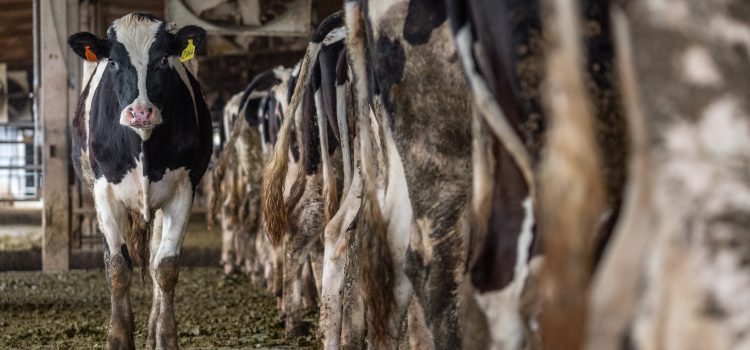
As the world grapples with the effects of climate change, it’s becoming increasingly clear that we need to take action to reduce our carbon footprint and mitigate the effects of global warming. One area where we can make a significant impact is in the dairy industry. Dairy cows are a major source of greenhouse gas emissions, but with the right management practices, they can also be a powerful tool for combating climate change. In this article, we’ll take a closer look at how dairy cows are becoming climate change allies.
First, let’s talk about the problem. Dairy cows are a major source of greenhouse gas emissions, primarily in the form of methane. Methane is a potent greenhouse gas that is 25 times more effective at trapping heat in the atmosphere than carbon dioxide. In fact, the dairy industry is responsible for around 4% of global greenhouse gas emissions.
So, what can we do to reduce the carbon footprint of the dairy industry? One solution is to focus on improving the efficiency of dairy production. This can be achieved through a variety of management practices, such as improving feed quality, reducing waste, and optimizing herd health.
One of the most effective ways to reduce the carbon footprint of dairy production is to focus on improving the diet of dairy cows. By providing cows with a diet that is high in fiber and low in starch, we can reduce the amount of methane that they produce. This is because fiber is more difficult for cows to digest, which means that it spends more time in their digestive system and produces less methane.
Another important factor to consider is the use of manure. Dairy cow manure is a significant source of greenhouse gas emissions, primarily in the form of methane and nitrous oxide. However, by properly managing manure, we can reduce these emissions and even use the manure as a source of renewable energy.
One way to manage manure is through the use of anaerobic digesters. Anaerobic digesters are systems that break down organic matter, such as manure, in the absence of oxygen. This process produces biogas, which can be used as a source of renewable energy. By using anaerobic digesters to manage manure, we can reduce greenhouse gas emissions and produce renewable energy at the same time.
In addition to improving the efficiency of dairy production, there are also a number of other strategies that can be used to promote sustainability in the dairy industry. For example, some dairy farmers are turning to regenerative agriculture practices, which focus on building healthy soil and promoting biodiversity. By using these practices, farmers can reduce their carbon footprint and improve the health of their land and animals.
Another strategy is to focus on reducing food waste. Food waste is a major contributor to greenhouse gas emissions, and the dairy industry is no exception. By reducing food waste and improving the efficiency of the supply chain, we can reduce the carbon footprint of dairy production and promote sustainability.
In addition to these strategies, there are also a number of technological innovations that are helping to reduce the carbon footprint of dairy production. For example, some farmers are using precision feeding systems that allow them to provide cows with the exact amount of feed that they need, reducing waste and improving efficiency. Other farmers are using methane capture systems that capture methane emissions from manure and convert them into renewable energy.
So, how are dairy cows becoming climate change allies? By implementing these management practices and technological innovations, dairy farmers are reducing the carbon footprint of their operations and promoting sustainability. In addition, some farmers are also using their land to sequester carbon through practices such as planting cover crops and reducing tillage.
In conclusion, dairy cows are becoming climate change allies through a variety of management practices and technological innovations. By improving the efficiency of dairy production, focusing on diet and manure management, and promoting sustainability through regenerative agriculture and food waste reduction, we can reduce the carbon footprint of the dairy industry and promote a more sustainable future. With the right management practices and technological innovations, dairy cows can be a powerful tool in the fight against climate change.










